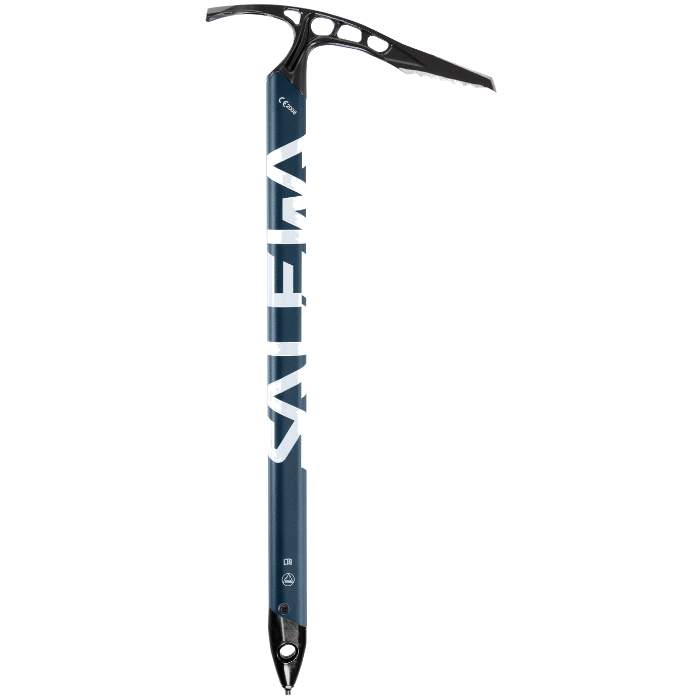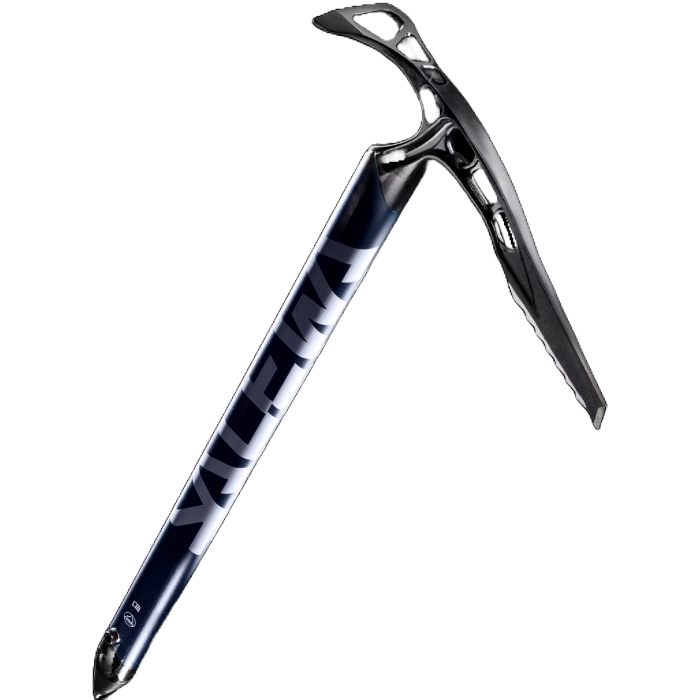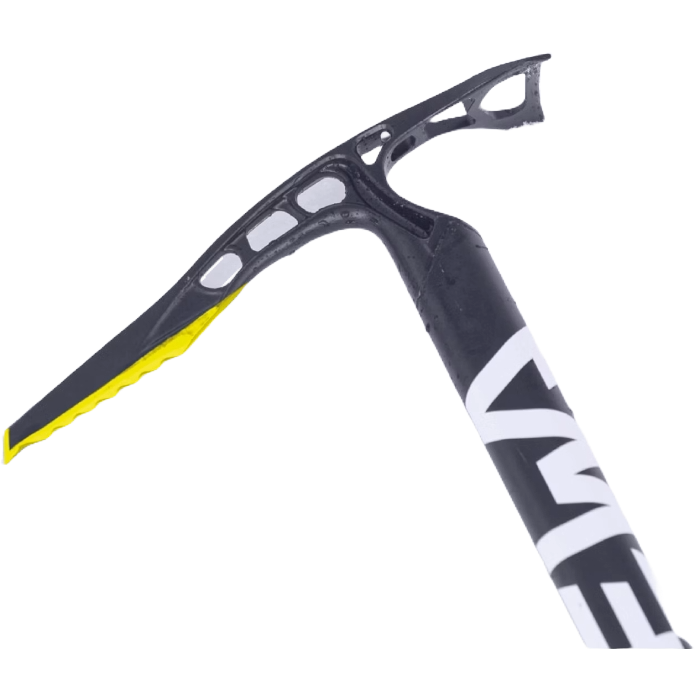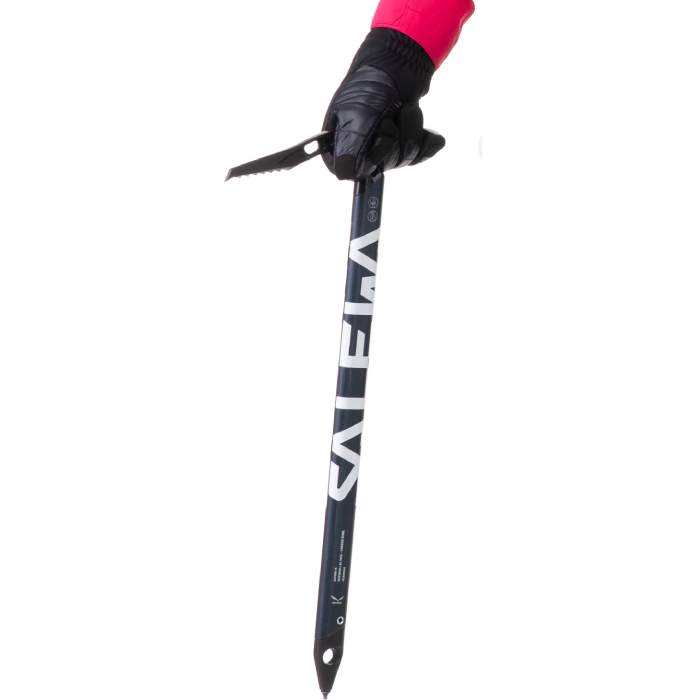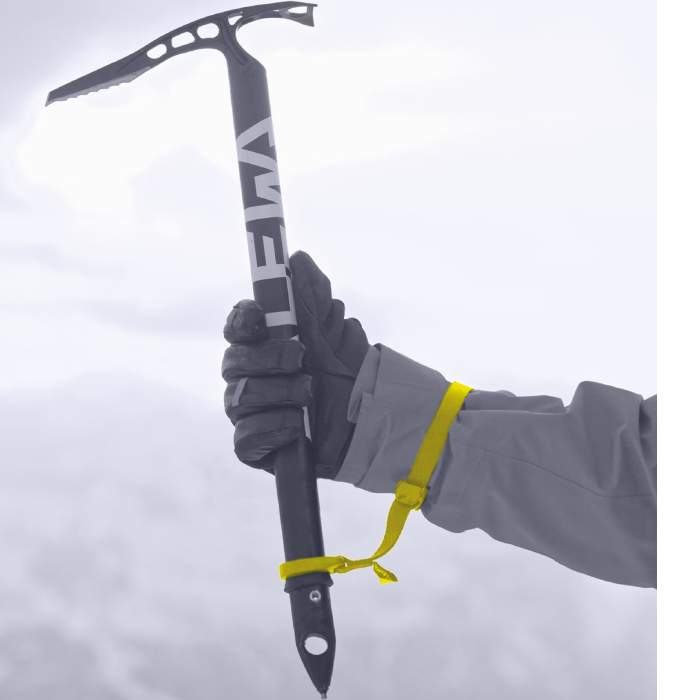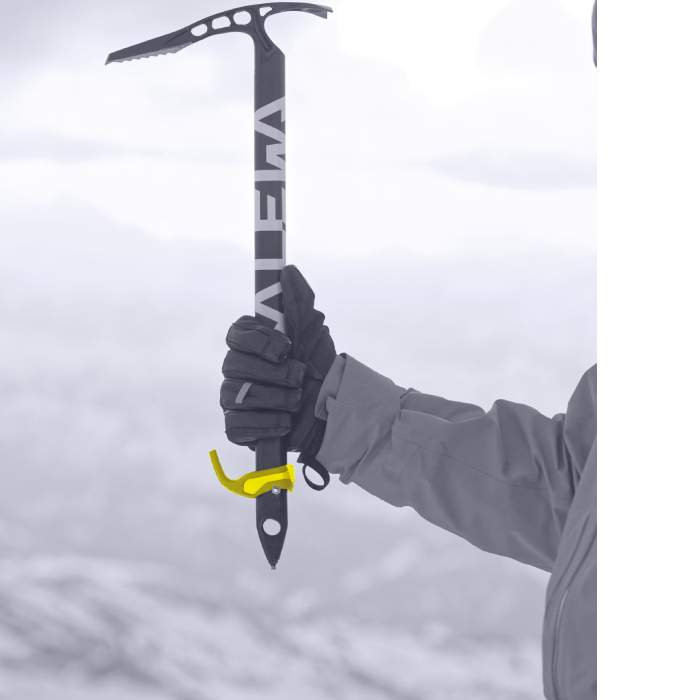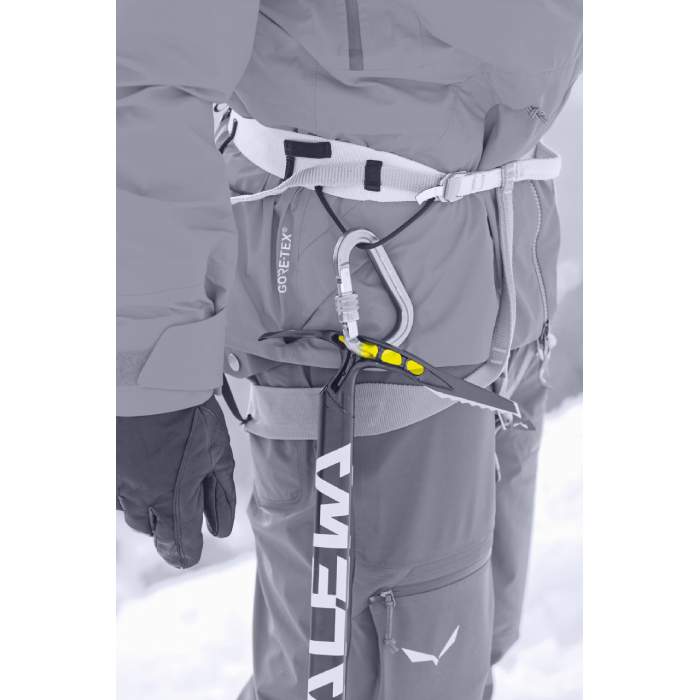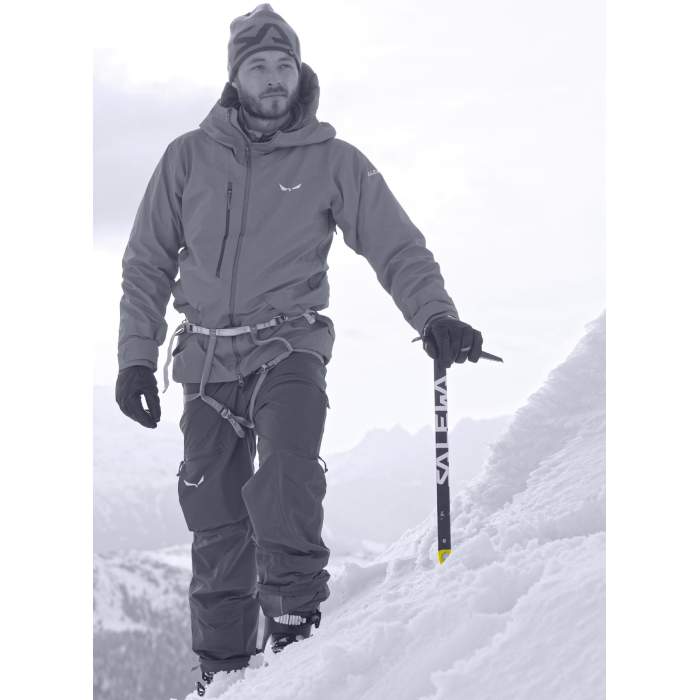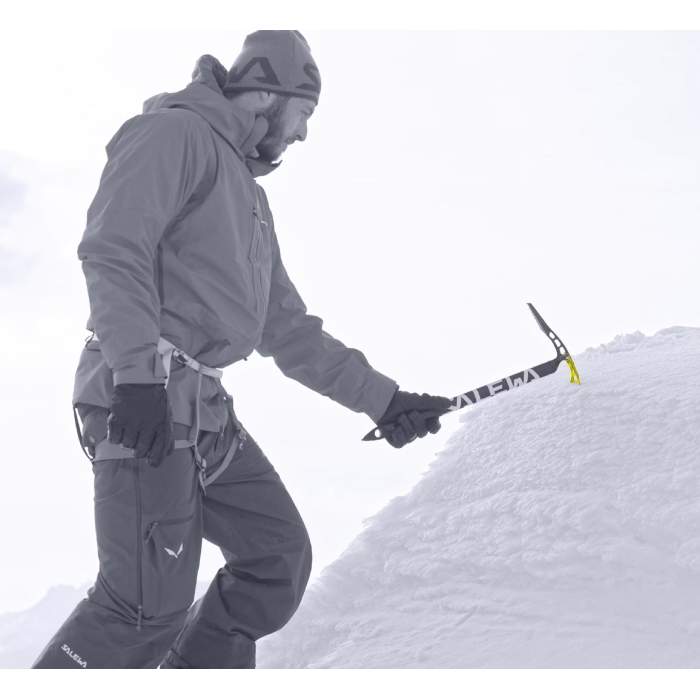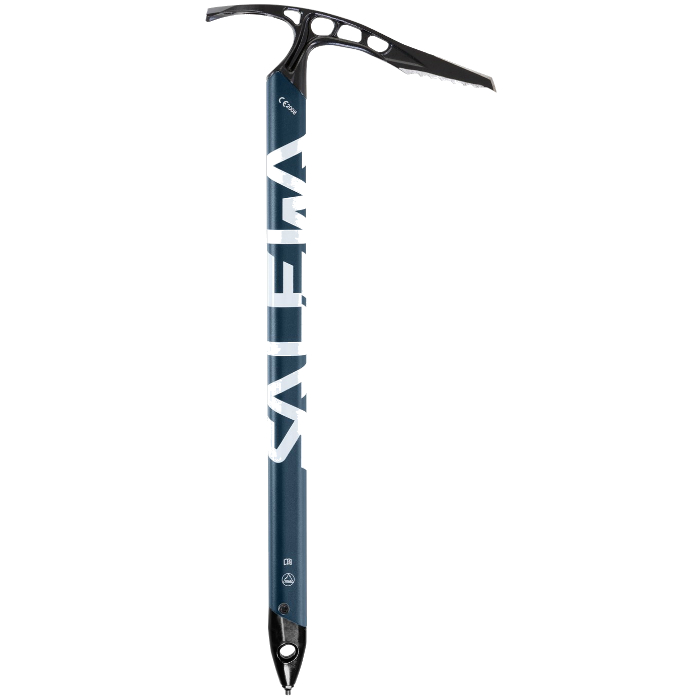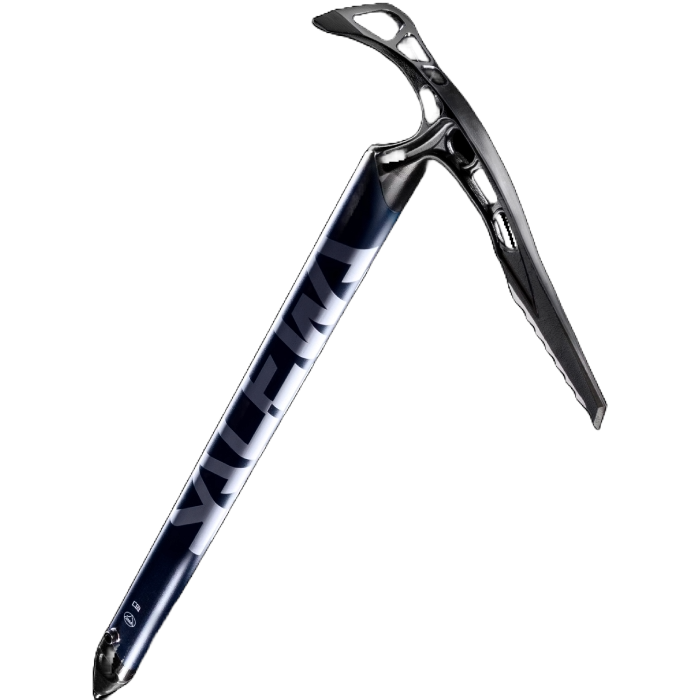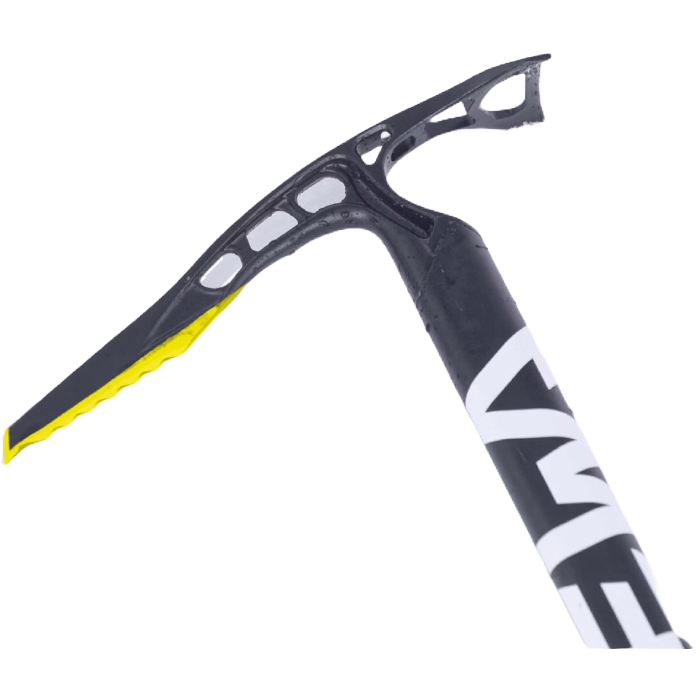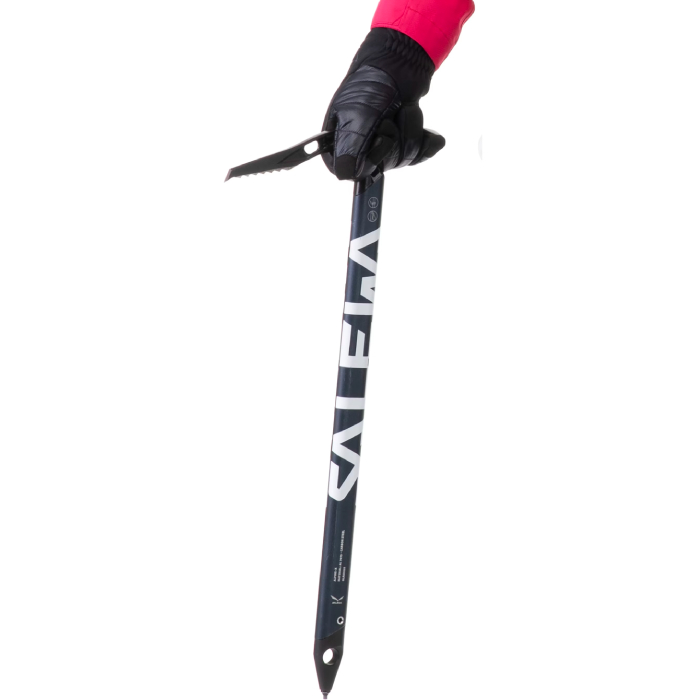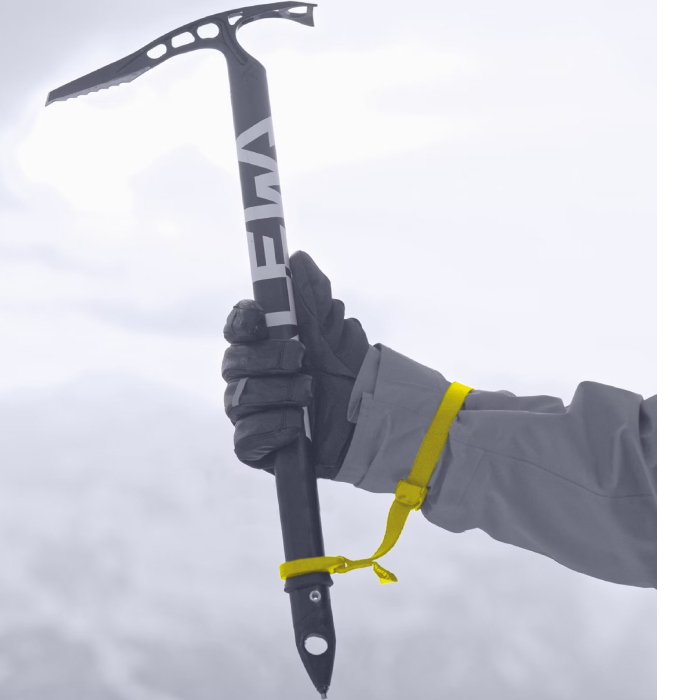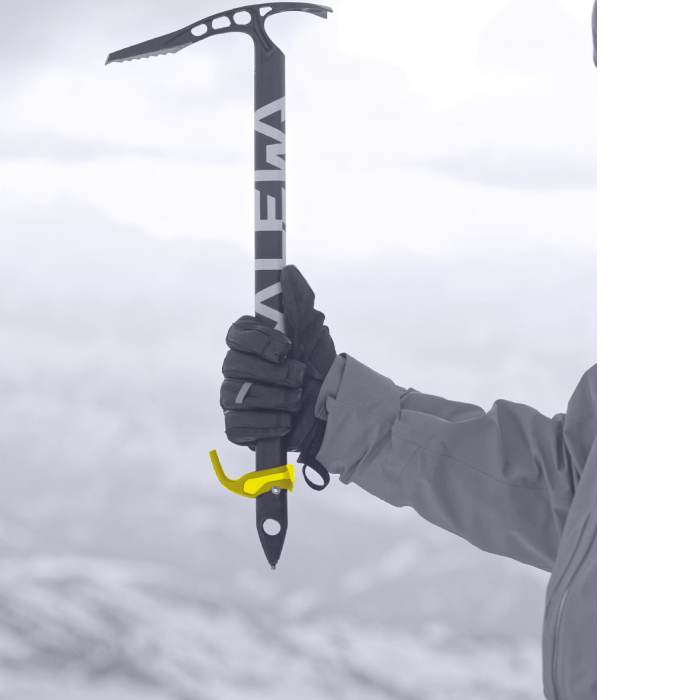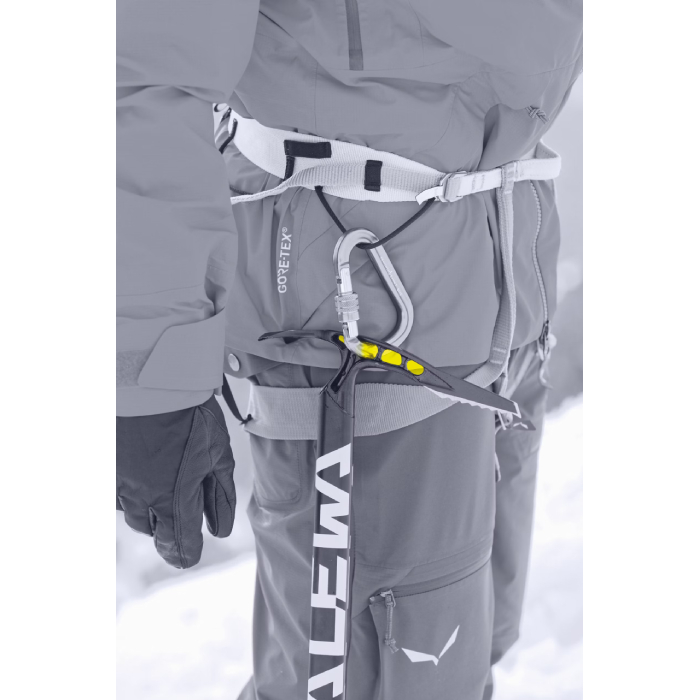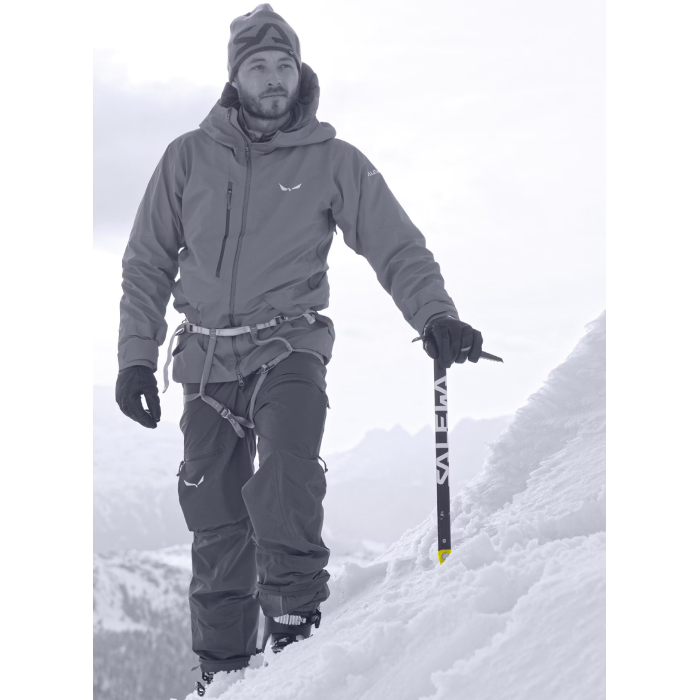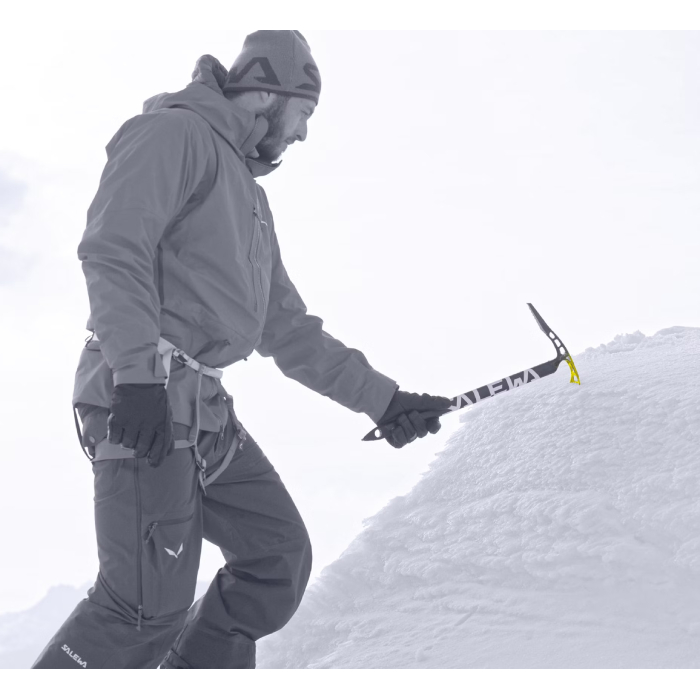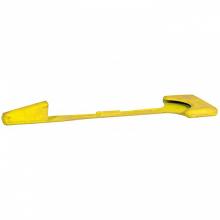Alpine-X
Description
A lightweight, hybrid ice axe for general mountaineering. Its ergonomic shape makes it especially comfortable to carry in the hand when used for support on ascents and descents. Its strong, aggressive steel blade gives improved penetration in steep alpine couloirs or for glacier work. With a sharpened adze for effective cutting steps and chopping ledges and straight shaft for smooth plunging and secure belay construction.
- Extremely comfortable to carry in the hand thanks to ergonomically shaped head
- Aggressive 3 mm blade designed for reliable penetration in ice and snow
- Good anchoring due to weight concentrated in precision-cast steel head
- Straight shaft for good snow penetration and reliable belay construction (deadman)
- Sharp (replaceable) carbide tip at bottom for better grip when moving on hard snow or ice
- Sharpened adze for effective cutting steps and chopping ledges
- Compatible with SALEWA self-locking handrest and handloop
- Holes for clipping carabiner at head and bottom of shaft base
Retail price
When you click a link below and then checkout online, no matter what you buy (climbing gear or not), we get a small commission that helps us keep this site up-to-date. Thanks!
Weight (g / oz)  Weight (g / oz)In grams and ounces, the weight, as stated by the manufacturer/brand. Since the most common ice axe length is 50cm that is the main length that we reference. When available, we list the weight for each length here. | 350 g / 12.34 oz 53 cm: 350 g / 12.34 oz |
Best Use  Best UseUltralight MountaineeringThe lightest axes available, used most for ski mountaineering, adventure racing, and other "go light" ascents. 350 grams is usually the max weight. The decreased weight means they are axes are built for snow missions, not ice. MountaineeringThis is the most common type of snow mountaineering axe. These axes are above 350 grams and are a great balance of weight and durability. There may be a grip and they will always have an adze head (and no matching hammer pair). These axes are great for snow and can handle chopping steps in ice, or other small ice scenarios. Technical MountaineeringThese axes are for tougher conditions when the majority of climbing is on snow, but the axe needs to be able to handle a short ice wall. They generally have a bent shaft and T-rated (more technical) pick. Often these beefier axes will have a rubberized grip and they may have a matching adze and hammer version. They're basically the offspring of an ice axe and ice tool. |
Mountaineering |
Length Options (cm)  Length Options (cm)Measured in centimeters, the best length is based on your height and ape index (arm length). Holding the axe in your hand, the spike (sharp end) of the axe should arrive around your shin. At the max size, it should go to your ankle. Two people of the same height could need a different sized axe, based on arm length (t-rex vs monkey). If in-between sizes, our bias is towards sizing shorter. Rule of Thumb
Worth ConsideringThere are other resources online that suggest a longer axe is a plus and that you should measure below the ankle. We absolutely disagree. A longer axe means you'll be tempted to use it as a trekking pole (which will put you off balance), or you'll have to give your arm a huge workout just to lift it in and out of the snow. Ice axes are meant to be used on the uphill side, which is already much higher. |
53 cm, 65 cm |
Head Details  Head DetailsThis refers to the back of the ice axe head (opposite the pick). 
For ice axes, adze's are (by far) the most common. An adze will allow you to break ice by chopping or shoveling in a specific area, and they also provide more room to hold on to the head than a hammer does. This grip helps for arresting too. Hammers are usually only used as a pair with an adze on the other axe (hammer's are much more common in ice tools than ice axes). A hammer uses a more broad force to break ice bulges. | Adze |
Ice Rating  Ice RatingThe certified rating of the pick and the shaft. These ratings might not match each other. There are only 2 possible shaft ratings: B / Type 1 / CEN-B: Basic | Pick: (none) Shaft: (none) |
Materials  MaterialsThe materials, as stated by the manufacturer / brand, of the pick, head, shaft and grip. | Pick: Carbon steel Head: Carbon steel Shaft: 7075 aluminium |
Certification  CertificationsThe main climbing gear certifications are CE and UIAA--and normally the UIAA creates the rules that the CE body also supports. When possible, we try to list all the certifications the product carries. To sell a climbing product in Europe, the device must be CE certified. There are no official requirements to sell climbing gear in the US. The UIAA certification is a voluntary process. For ice axes, there is a separate certification for the pick and the shaft. Learn MoreRock and Ice Certifications Guide |
CE, EN, UIAA |
Warranty  WarrantyThis isn't super common, but sometimes the manufacturers will state a specific warranty such as "3 years against manufacturer defects" |
|
Overall, I found the Salewa Ice Axe was a great ice axe to use for mountaineering out in the Alps, and has made a big difference to the weight of my kit when out on routes. Whilst I’ll still be keeping hold of my trusted old axes for Scottish winter, the Salewa Alpine-X does what it says on the shaft and is a great piece of kit to try and save precious weight.

